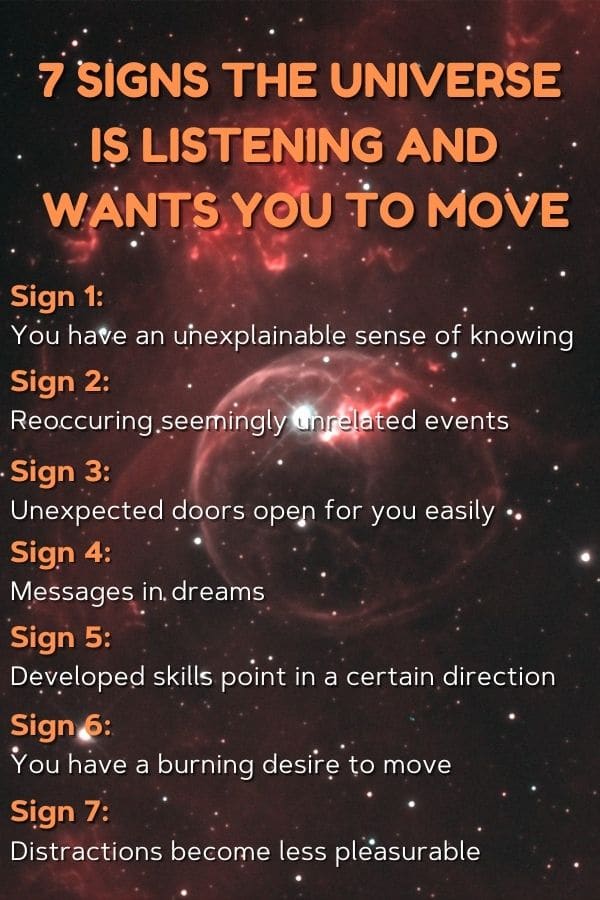Welcome to your journey into “Understanding The Laws Of The Universe”! This enlightening piece unravels the underlying principles that govern everything from the smallest particles to the vast expanses of space. As you dive deep into this article, you’ll discover how these universal laws shape our existence, influence our daily lives, and connect us all in a harmonious dance of energy and matter. Prepare yourself for an engaging adventure that illuminates the mysteries of the cosmos and enriches your understanding of the world around you.
Understanding The Laws Of The Universe
Have you ever wondered what governs the cosmos, keeps the stars in place, and dictates the motion of planets? It’s fascinating, isn’t it? The universe operates under sophisticated laws, and understanding them can be an awe-inspiring journey. These laws are not just theoretical concepts reserved for scientists; they are the very fabric of how everything functions around us. Let’s delve into these cosmic regulations together and uncover the mysteries that guide our universe.

What Are the Laws of the Universe?
The laws of the universe are fundamental principles that govern the behavior and interaction of matter and energy. These laws are deeply rooted in physics and have been refined over centuries through observation, experimentation, and mathematical formulation. Broadly speaking, they include classical mechanics, quantum mechanics, thermodynamics, and relativity.
Classical Mechanics
Classical mechanics, often associated with Newtonian physics, deals with the motion of objects that are much larger than atoms and move much slower than the speed of light. Here are some critical concepts under classical mechanics:
Newton’s Laws of Motion:
- First Law (Inertia): An object at rest stays at rest, and an object in motion continues in motion unless acted upon by an external force.
- Second Law (F=ma): The acceleration of an object is directly proportional to the net force acting on it and inversely proportional to its mass.
- Third Law: For every action, there is an equal and opposite reaction.
Law of Universal Gravitation: Every mass exerts an attractive force on every other mass. The strength of this force is directly proportional to the product of their masses and inversely proportional to the square of the distance between them.
Quantum Mechanics
Quantum mechanics governs the behavior of particles at the atomic and subatomic levels. It’s a realm where the rules of classical mechanics cease to apply. Key principles include:
- Wave-Particle Duality: Particles such as electrons exhibit both wave-like and particle-like properties.
- Uncertainty Principle: Formulated by Heisenberg, it states that it is impossible to precisely know both the position and momentum of a particle simultaneously.
- Quantum Entanglement: Particles can become entangled, meaning the state of one particle instantly influences the state of another, no matter the distance separating them.
Thermodynamics
Thermodynamics deals with heat, work, and energy. The fundamental laws are:
- First Law (Conservation of Energy): Energy cannot be created or destroyed, only transformed from one form to another.
- Second Law: The total entropy (disorder) of an isolated system can never decrease over time.
- Third Law: As the temperature of a system approaches absolute zero, the entropy approaches a minimum value.
Relativity
Developed by Albert Einstein, relativity includes both the Special and General theories:
- Special Relativity: Describes the physics of objects moving at constant speeds, particularly those close to the speed of light. Time dilation and length contraction are key phenomena.
- General Relativity: Explains gravity as the curvature of spacetime caused by mass and energy. It replaced Newton’s notion of gravitational force acting at a distance.
Why Should You Understand These Laws?
Grasping these universal laws can profoundly impact your perspective on life. Not only do they explain natural phenomena, but they also have practical applications:
- Technology: From GPS systems (which require relativistic corrections) to MRI machines (based on quantum mechanics), our modern world heavily relies on these principles.
- Philosophy and Thought: Understanding these laws can cultivate a sense of awe and curiosity, making you more appreciative of the universe’s complexity.
- Problem-Solving: Applying these concepts can improve critical thinking and problem-solving skills, useful in everyday life and professional fields.

Breaking Down the Key Concepts
Let’s dig deeper into each area to make these complex ideas more digestible.
Newton’s Laws of Motion
Imagine you’re on a skateboard. According to Newton’s First Law, you will stay stationary until you push off the ground (external force). Once moving, you’ll keep going until friction or another force causes you to stop.
Now, if you have a small skateboard (lighter mass), a gentle push (force) will speed you up quickly, whereas a larger skateboard (heavier mass) will require much more force to achieve the same speed, encapsulating Newton’s Second Law.
Finally, when you push backward with your foot, the skateboard moves forward. This exemplifies Newton’s Third Law: your backward push causes an equal and opposite forward motion.
Law of Universal Gravitation
Think of Earth and the Moon. They are held in their positions by gravity. This force is why you stay grounded instead of floating away. It’s also why planets orbit the sun, thus enabling life on Earth by providing a stable climate and seasons.
Wave-Particle Duality
In your everyday experience, light seems to travel in straight lines (like particles). Yet, light can also spread out and interfere like waves, demonstrating its dual nature. This principle is crucial for technologies such as lasers and electron microscopes.
Heisenberg’s Uncertainty Principle
This principle can be a bit mind-boggling but think of it this way: if you were trying to measure a football field in pitch darkness with a flashlight (photon), the more precisely you try to illuminate and measure a single blade of grass (particle position), the less able you are to see how fast the wind is moving the grass (momentum), and vice versa.
Quantum Entanglement
Consider two entangled particles like two synchronized dancers on opposite sides of the planet. If one dancer moves, the other instantly mirrors the move, regardless of the distance separating them. While it’s still a mystery how it happens, this phenomenon has potential applications in quantum computing and cryptography.
Conservation of Energy (First Law of Thermodynamics)
Think about a car engine. It converts the chemical energy in fuel into kinetic energy (motion) and thermal energy (heat). Despite energy shifting forms during the process, the total energy remains conserved, neither disappearing nor appearing out of nowhere.
Entropy (Second Law of Thermodynamics)
Consider your bedroom: Left to itself, it tends to become messier over time. This increase in disorder (or entropy) is a natural tendency, requiring effort (energy) to clean up and reduce disorder, aligning with the Second Law.
Special Relativity
Ever wondered why GPS satellites, which travel at high speeds, need adjustments to their onboard clocks? According to Special Relativity, as their speed approaches a significant fraction of the speed of light, time dilates (slows down) for them relative to someone on Earth. Adjusting for this is crucial for precise positioning.
General Relativity
Imagine placing a heavy ball on a rubber sheet, causing the sheet to warp. This warping is akin to spacetime bending around a massive object like Earth. This curvature tells planets how to orbit— not through a force but by following the curved paths in spacetime.

Practical Applications and Everyday Examples
You might be wondering how such lofty concepts have practical implications. Surprisingly, they touch almost every aspect of modern life. Let’s explore.
Technology and Innovation
GPS and Smartphones
Your smartphone’s GPS needs to account for both Special and General Relativity. Without these adjustments, the positioning system could be off by several kilometers, making it unreliable for navigation.
Medical Imaging
MRI machines, which rely on principles of quantum mechanics, provide detailed images of your body’s internal structures, essential for diagnosing various medical conditions.
Renewable Energy
Thermodynamics principles are crucial in designing and improving solar panels, wind turbines, and even the algorithms that optimize their performance.
Transportation and Space Exploration
Airplane Design
Wing shapes are designed using the laws of aerodynamics, a branch of classical mechanics. Engineers apply these principles to ensure efficient, safe, and comfortable flight experiences.
Space Missions
Sending robots and astronauts to space involves complex calculations that consider gravitational pull, energy requirements, and propulsion, all governed by these fundamental laws.
Everyday Problem-Solving
Understanding these laws can also enhance your decision-making skills. Whether it’s optimizing your workout based on biomechanical principles or investing wisely by considering energy-efficient technologies, these laws offer a solid foundation.

Simplified Table of Basic Laws
To help you better grasp these fundamental concepts, here’s a simplified table summarizing the key laws:
| Law | Domain | Key Principle |
|---|---|---|
| Newton’s First Law (Inertia) | Classical Mechanics | Object stays at rest or in uniform motion unless acted upon |
| Newton’s Second Law (F=ma) | Classical Mechanics | Force equals mass times acceleration |
| Newton’s Third Law | Classical Mechanics | Action equals opposite reaction |
| Law of Universal Gravitation | Classical Mechanics | Gravitational force between two masses |
| Wave-Particle Duality | Quantum Mechanics | Particles exhibit both wave-like and particle-like properties |
| Uncertainty Principle | Quantum Mechanics | Impossible to know exact position and momentum simultaneously |
| Quantum Entanglement | Quantum Mechanics | Instantaneous state influence between entangled particles |
| Conservation of Energy | Thermodynamics | Energy cannot be created or destroyed |
| Entropy (Second Law) | Thermodynamics | Natural tendency towards disorder |
| Special Relativity | Relativity | Physics of objects near light speed |
| General Relativity | Relativity | Gravity as curvature of spacetime |

Conclusion
Understanding the laws of the universe may seem daunting at first, but breaking them down reveals their beauty and simplicity. These governing principles are not only fascinating but also practically indispensable. They explain why the universe behaves the way it does, and they have paved the way for significant technological advancements and innovations.
So next time you gaze at the stars or use your smartphone’s GPS, remember that complex universal laws are at work, making these marvels possible. By embracing these laws, you cultivate a profound appreciation for the intricate dance of matter and energy that defines our existence.
Ready to dive deeper? Keep exploring, stay curious, and let the laws of the universe enlighten your path. The cosmos has countless secrets waiting for you to uncover.








